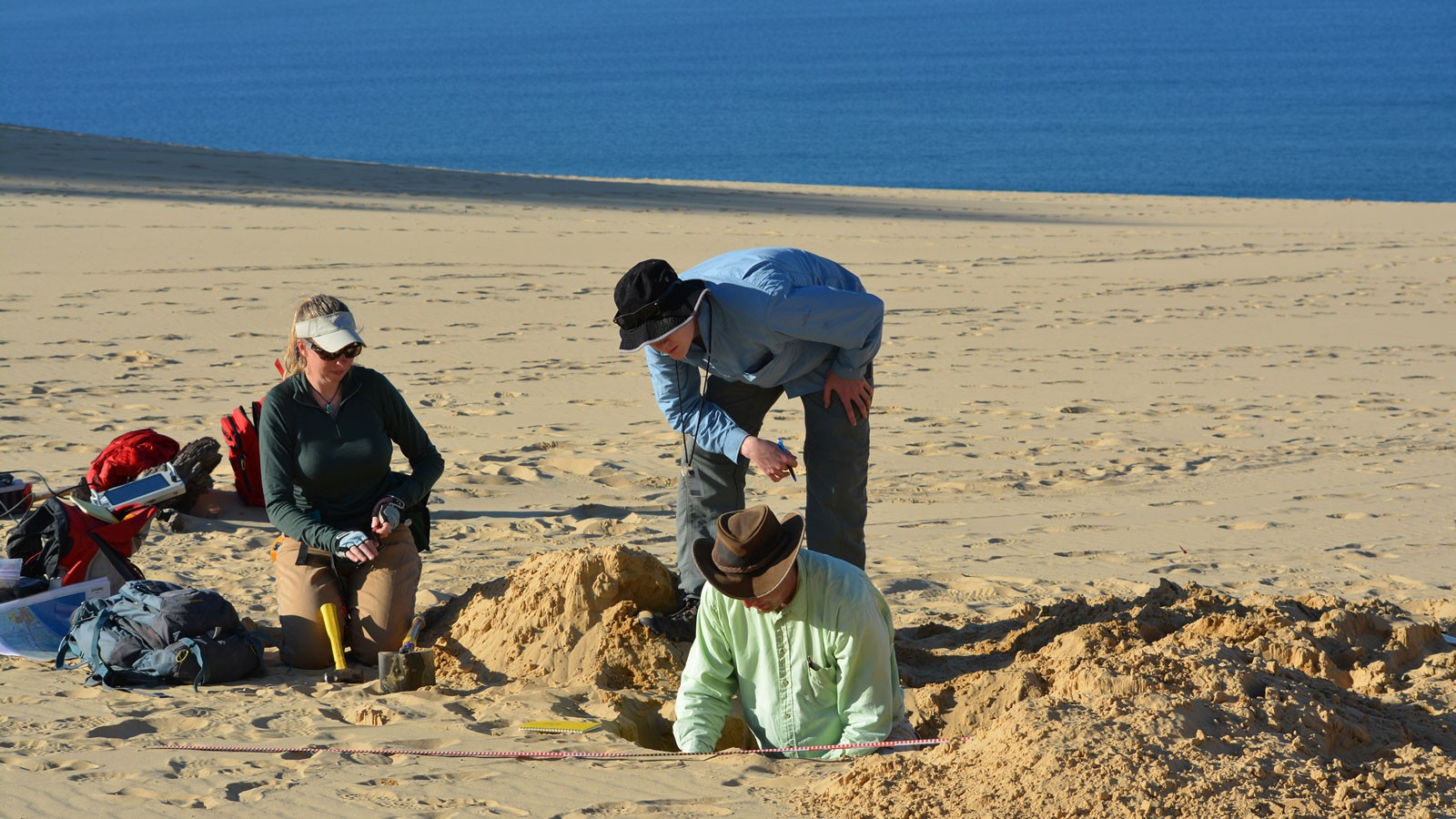USU Geoscientist Says Sea-Level Changes Formed Australia's K'gari Sand Island, Great Barrier Reef
Tammy Rittenour and colleagues publish findings about world's largest sand island in 'Nature Geoscience.'
By Mary-Ann Muffoletto |
From left, USU geoscientist Tammy Rittenour and colleagues collect sediment samples from eastern Australia's K’gari, formerly known as Fraser Island. Their work sheds new light on the formation of the massive sand island, as well as the Great Barrier Reef.
How did the world’s largest sand island, K’gari, the indigenous name for eastern Australia’s Fraser Island, along with the Great Barrier Reef, the world’s largest coral reef, come to be? Little is known about the formation of these UNESCO World Heritage-listed sites, which have been influenced by a stable, long-term tectonic history over the Quaternary period that began 2.6 million years ago.
But new findings by Utah State University geoscientist Tammy Rittenour and an international team of colleagues point to a modern-day concern that could have initiated the iconic landforms’ beginnings some 800,000 years ago: sea-level rise.
Rittenour and researchers from the University of Queensland, Australian National University, Flinders University, the University of Western Australia, the University of Canterbury, Clarkson University and Stockholm University report the findings in the Nov. 14, 2022, issue of Nature Geoscience. The team’s research was supported by an Australian Research Council grant.
“Our research provides evidence that the formation of K’gari and the Great Barrier Reef are linked to a change in the magnitude of sea-level rise and fall due to major climate feedback changes during the Middle Pleistocene Transition,” says Rittenour, professor in USU’s Department of Geosciences and the Ecology Center.
Using sediment samples from hand cores and beach bluffs, Rittenour, director of the USU Luminescence Laboratory, used optically stimulated luminescence dating to constrain the time of formation of the island’s extensive, brightly hued sand dunes, as well as those from the adjacent Cooloola Sand Mass.
“We found that the sand island and dune fields first formed 1.2-0.7 million years ago, during a period of climate reconfiguration, when increasing global ice volume caused sea-level fluctuations that redistributed sediment previously stored on the continental shelf,” Rittenour says. “The formation of K’gari prevented the transport of sand northward along the coast, into the areas that now host the Great Barrier Reef.”
The outward-jutting orientation of the massive sand island created conditions for the crystal-clear water needed for coral growth, allowing the development of the Great Barrier Reef.
“These significant findings are changing the way we look at coastal sedimentary systems,” Rittenour says. “This wholesale change in coastal conditions during the middle Pleistocene is probably not unique to eastern Australia’s coast and should be investigated in other passive-margin coastlines around the world.”
WRITER
Mary-Ann Muffoletto
Public Relations Specialist
College of Science
435-797-3517
maryann.muffoletto@usu.edu
CONTACT
Tammy Rittenour
Professor and Director
Department of Geosciences and USU Ecology Center; USU Luminescence Laboratory
435-213-5756
tammy.rittenour@usu.edu
TOPICS
Geosciences 74storiesComments and questions regarding this article may be directed to the contact person listed on this page.







